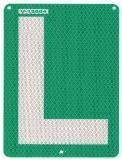Sue Burke's Blog, page 72
October 23, 2013
Passive Workshop: Grammatical questions are answered (Session 3)

In passive voice, the subject of the sentence receives the action of the verb. It is usually made by using the verb to be or sometimes to get and the past participle of the main verb. The agent of the action does not always have to be expressed, but when it is, this is usually done using an expression with by.
If all this seems confusing, a few examples may explain it. (You can also watch this basic grammar video: http://www.youtube.com/watch?v=ePfmgMTgXl8)
Here is an active sentence:
Mars invaded Earth.
Here is that sentence in passive, in two forms:
Earth was invaded by Mars. Earth got invaded by Mars.
The past participle is the form of the verb that usually ends with -ed, although there are many irregular verbs. For example: Cook, cooked. Love, loved. Use, used. See, saw. Eat, eaten. Buy, bought.
(The present participle is the form of the verb that ends with -ing, and there are no exceptions: Cook, cooking. Love, loving. Use, using. See, seeing. Eat, eating. Buy, buying. This form is often used in continuous or progressive tenses, a tense that can be confused with passive voice. He was eating is active voice. He was being eaten is passive voice.)
Passive voice can be used with most tenses, but not all verbs can be used in passive voice. For example, Earth died after the invasion. This can’t be changed into Earth was died after the invasion. This is more a matter of meaning than grammar.
Here are active and passive voice sentences in various tenses, aspects, and moods:
Mars invades Earth. Earth is invaded by Mars. (Present Simple)
Mars is invading Earth. Earth is being invaded by Mars. (Present Continuous or Progressive)
Mars invaded Earth. Earth was invaded by Mars. (Past Simple)
Mars was invading Earth. Earth was being invaded by Mars. (Past Continuous or Progressive)
Mars will invade Earth. Earth will be invaded by Mars. (Future Simple)
Mars is going to invade Earth. Earth is going to be invaded by Mars. (Going to Future)
Mars has invaded Earth. Earth has been invaded by Mars. (Present Perfect)
Mars had invaded Earth. Earth had been invaded by Mars. (Past Perfect)
Mars will have invaded Earth. Earth will have been invaded by Mars. (Future Perfect)
I hate Mars invading Earth. I hate Earth being invaded by Mars. (Present Participle form)
Mars would invade Earth. Earth would be invaded by Mars. (Conditional Mood)
Mars must invade Earth. Earth must be invaded by Mars. (Modal Form; there are other modals besides must, including ought, can, should, may...)
Other kinds of structures are possible, but I don’t want to get too repetitive or technical.
Next: Why use passive?
(Photo: NASA)
October 22, 2013
Passive Workshop: Spot the passives (Session 2)

How many passive voice structures can you find in this passage? It’s the opening paragraph to the Appendix in 1984 by George Orwell: “The Principles of Newspeak”:
Newspeak was the official language of Oceania and had been devised to meet the ideological needs of Ingsoc, or English Socialism. In the year 1984 there was not as yet anyone who used Newspeak as his sole means of communication, either in speech or writing. The leading articles in The Times were written in it, but this was a tour de force which could only be carried out by a specialist. It was expected that Newspeak would have finally superseded Oldspeak (or Standard English, as we should call it) by about the year 2050. Meanwhile it gained ground steadily, all Party members tending to use Newspeak words and grammatical constructions more and more in their everyday speech. The version in use in 1984, and embodied in the Ninth and Tenth Editions of the Newspeak Dictionary, was a provisional one, and contained many superfluous words and archaic formations which were due to be suppressed later. It is with the final, perfected version, as embodied in the Eleventh Edition of the Dictionary, that we are concerned here.
A
N
S
W
E
R
Six. They will be identified in Session 9.
Next: The grammar of the passive voice.
October 21, 2013
Passive Workshop: A grammar whodunit (Session 1)

Like me, you’ve probably been told not to use passive voice, but what is passive voice? Can you recognize it, and is it really death to good prose? In this online workshop, with one brief post per day for ten days, your questions will be answered and your doubts will be erased.
Why am I the person to do this? Grammar pays my bills. I live in Spain and teach English to language learners, from beginners to mastery-level students – which means grammar, grammar, grammar. I hold a Cambridge University Certificate in English Language Teaching to Adults. If that were not enough, I’ve worked as a professional writer and editor for forty years.
This workshop will have ten brief sessions:
1. Introduction (this post).
2. Spot the passives, using a text by George Orwell.
3. The grammar of the passive voice.
4. Why use passive voice?
5. How to change active to passive.
6. Exercises, active to passive.
7. How to change passive to active.
8. Exercises, passive to active.
9. Orwell revisited: Where are the passives? Can they be changed?
10. What Orwell really said about passive voice.
Next post: Spot the passives in the first paragraph of “Principals of Newspeak” by George Orwell.
— Sue Burke
October 16, 2013
Go Ahead — Write This Story: Parallel stories
You don’t have to write one story at a time, even in the same story. You can write a story that cuts from one story line to another with thematic or narrative connections. Usually each story line progresses chronologically, but they may be taking place in different locations, in different time periods, or to different people. If you need a story idea, here are a few:
• This is a story about people trying to prevent a war whose causes have deep roots.
• This is a story about a disaster that depopulates Earth, and about a village that is founded later on to repopulate it.
• This is a children’s story about three young people who each meet the same talking dog.
— Sue Burke
October 9, 2013
Critique Format

There are many formats to follow, but this one is easy to use and especially helpful for the author.
1. What the story or work is or does, in one or two sentences.
2. The successes of the work.
3. The weakest parts.
4. One or two ideas for the fastest and biggest improvements.
This kind of critique is meant to help the author improve the story before publication – something quite different from an academic or literary analysis, which helps readers understand the story after publication.
Each part of the critique tries to accomplish something different to help the author and often the critiquer as well. The best way to learn to write is to write a lot, and the second-best way is to analyze other written works. Doing it as a group exercise lets you see other viewpoints and get even more ideas about how to improve your writing.
1. What the story or work is or does, in one or two sentences.
This way the author can see if you read the story the author tried to write. For example: “This is a story about racism.” “A couple pause during a trip and talk about everything but her pregnancy. It becomes clear they’ll break up after the abortion.” “A poet faces constant challenges to his art until he decides to defy authority.”
A unique understanding of the story can spur the author a new thematic development. On the other hand, the summary may also show the author that the critiquer wanted to read a different story and that person’s comments should be interpreted in that light.
It’s okay to say you didn’t understand the story.
2. The successes of the work.
So the author knows what not to change, which is important. Also so the author feels some sense of accomplishment. We wouldn’t want the author to make a mistake out of despair and eliminate the good parts.
3. The weakest parts.
This helps the author to know what should be changed. This is not the place for typos, quibbles, and stylistic changes such as how to handle dialog, which should be noted on the manuscript. This is for observations like “There’s no foreshadowing of the murder” or “I didn’t realize at first that the setting was a hotel”.
Critiquers might not agree on the successes and weaknesses.
4. One or two ideas for the fastest and biggest improvements.
The author and you can focus on the big picture. This can be a learning experience for both of you, since there’s always a lot that could be changed.
Again, there may be disagreements that can help both the author and critiquer evaluate other stories better by observing what different eyes saw in this particular work.
When should you seek a critique?
When you don’t know how to improve the work further. Or when you have questions you can’t answer yourself. Don’t waste the critiquer’s time with works that you intend revise before you receive the critique. Likewise, critiquers should also have the courtesy to return the critique promptly, and should offer constructive rather than destructive criticism.
How should you do the critique?
As a rule, it’s best to read the work through once to get an overall sense, and then read it again to begin critiquing.
How should you conduct a group critique?
Here are the usual rules for the feedback:
The author does not speak, since readers will not have the author on hand to explain the work after it is published. The author should be scribbling notes, though.
The critiquers speak in a circle, one after another. If someone else has already said what you found, you can just say “I agree with Miriam about the lack of foreshadowing.”
After every critiquer has spoken, they can continue to discuss, even argue. The author remains silent, taking notes.
Finally, the author speaks, and more discussion can ensue. The author collects the manuscripts and thanks everyone.
— Sue Burke
October 2, 2013
Your Spanish walking license
Congratulations on receiving Spanish residency! You now have twelve months to obtain a Spanish walking license. This involves a theory test and a practice test, and your license will be recognized in many European Union countries with similar requirements.
While you may think there is nothing special to walking, Spanish laws and customs are distinctive. Special “andaescuelas” will provide the needed instruction (for a fee) and will take you out for practice walks (for an additional fee per session), during which you must wear a reflective green “L” (included in the fee) on your shoulder to alert other walkers.

Spanish citizens normally receive this instruction as part of their “bachillerato” education during ages 17 and 18. The 25% school dropout rate after age 16 explains a lot about what you see on the sidewalks of Spain.
Before you can go on practice walks, you must pass an official theory test (for a fee), which involves 30 questions. You must get 27 questions correct. The test is conducted at special regional centers on computers, and your andaescuela will let you practice (free of charge) on special computers at its school. If you fail your test, you can try again (for another fee). Here is a sample of the 15,500 possible questions (these are actually driving test questions):
1. How should you cross a traffic circle?
A. By the shortest means possible, even if it means crossing the road.
B. Walking in the direction to face oncoming traffic.
C. Walking around the traffic circle on the sidewalk or, if there is no sidewalk, on the shoulder. Correct.
2. A sign with a black silhouette of a person walking on a white background surrounded by a red circle means:
A. The roadway is for pedestrian use only. False. That would be a round blue sign with a white silhouette of a pedestrian.
B. You are approaching an area that is frequented by pedestrians. False. That would be a sign with a black silhouette of a pedestrian on a white background surrounded by a red triangle.
C. Pedestrians are prohibited from entering. Correct.
3. When walking at night outside of populated areas, a pedestrian:
A. Must walk on the left shoulder.
B. May walk on either shoulder, but must wear a reflective element such as a vest visible from 150 meters.
C. Must walk on the left shoulder and must wear a reflective element such as a vest visible from 150 meters. Correct.
Once you have passed the theory test, you have permission to practice supervised by a qualified instructor on public sidewalks (don’t forget the fee). Your instructor will give you guidance on how to pass the practice test, which is stringent.
The test will take place at a special regional center (for a fee), probably the same one where you took the theory test. An indoor course will involve about 20 minutes of walking. You may wear any shoes, although comfortable footwear is advisable. If you have special needs, such as a cane, wheelchair, personal caregiver, or seeing-eye dog, these will be accommodated. Tests are available in a variety of languages, but all the road signs you encounter will be in Spanish.
Among the many things to remember, here are some common mistakes:
• On an escalator, remember to stand to the right and walk on the left. Your examiner will tell you if you are “in a hurry” or “on a Sunday stroll.”
• When you approach a stairway, turn to face the stairway directly, not at an angle. Be sure to place your entire foot firmly on the riser. Do not walk on tiptoes or let your heel hang over the edge. Falling down stairs, even just two or three steps, is an automatic failure of the exam.
• In construction zones, obey all signs and follow all detours in the sidewalk. Construction workers assigned to direct automotive and pedestrian traffic must be obeyed as if they were police officers, with corresponding penalties for failing to follow instructions.
• Remember that you may cross anywhere on “residential streets,” which are marked by a blue rectangular sign that shows a pedestrian, a child playing with a ball, a house, a curb, and a car. You also have priority in “Zona a 30,” which are zones where automobile traffic is limited to 30 kilometers per hour and which are marked by a white rectangular sign with the word “ZONA” in black and a black number “30” surrounded by a red circle. At zebra-striped crosswalks without stop lights, pedestrians have the right of way over oncoming automotive traffic. Your examiner will expect you to know when you may cross a street and will expect you to cross with resolution if you have the right to do so. Excessive hesitation will cause you to fail the exam.
• You are no longer required to walk to the right on sidewalks as if you were a car on a road, but it’s a nice touch.
As you can see, there’s a lot to know. Don’t lose heart if you fail to pass the first time because this is common. You may take the test as many times as necessary (for a fee each time). When you pass, you will receive a temporary walking license immediately and your official license will arrive by mail within four weeks (included in the fee, although any subsequent changes to the license, such as a change of residency, involves another fee).
Remember, walking is excellent exercise and Spain is a beautiful country, so once you have your license, put it (and all the money it cost) to good use. Happy walking!
— Sue Burke
Also posted at my professional webpage:
And check out this music, "I'm Walking," by Fats Domino
http://www.youtube.com/watch?v=EqKgp3cLd5A
September 24, 2013
Review of Terra Nova anthology
As you know, I am one of the translators of this book.Review of Terra Nova anthologyReview of Terra Nova anthology

The reviewer, Alexandra Pierce, says (among other things):
“This is an eclectic anthology. It suggests that place can have a major influence on fiction — ‘Greetings from a Zombie Nation’ has aspects that sounds distinctly dystopian but actually reflect lived Cuban experience — but also that some science fictional ideas transcend place, as with the impact of technology on everyday lives. It's marvelous to see Spanish work being translated and made accessible to English speakers, and I hope that translators can be kept in work bringing more to our attention.”
http://www.strangehorizons.com/reviews/2013/09/terra_nova_an_a.shtml
I would be delighted to bring more Spanish work to English readers, and in fact I’m trying to do that.
— Sue Burke
September 18, 2013
Go Ahead — Write This Story: Men talk, women talk
Behind every stereotype, there’s a grain of truth. Men and women tend to talk differently, and you can bear that in mind to create a routine, exceptional, or gender-bending character.
Men tend not to ask rhetorical questions or seek validation, while women are more likely to ask approval-seeking questions. Men generally answer questions with specific information, even when women who ask questions may only be seeking sympathy or understanding. Men usually do not volunteer emotions and are unlikely to show any emotion besides anger, while women may show a range of emotions but avoid anger. Men lean toward being direct and avoiding euphemisms, while women may be indirect and carefully consider the effect of what they say before they say it.
Be aware of differences in dialog, and if you need a story idea, here are a few:
• This is a story about a smart house (http://en.wikipedia.org/wiki/Home_automation) that decides it needs a ghost.
• This is a murder mystery set at a 12-step meeting where a detective discovers an apparent telepath who drank to blot out other people's thoughts.
• This is a thriller about a woman on a multi-species space station who manages a black market to buy and sell illegal pets, including humans.
— Sue Burke
September 12, 2013
My report on the Celsius 232 festival

Here’s my report on Celsius 232, a festival of horror, fantasy, and science fiction held in Avilés, Spain, this summer.
http://www.concatenation.org/conrev/celsius2013.html
The report appears in The Science Fact & Science Fiction Concatenation.
— Sue Burke
September 9, 2013
Losers weepers
Why? ¿Why? That's the question today whining on the radio, whinging in the newspapers, whipping up the television, whiffing among politicians, and whimpering from athletes.
Was it the failing economy? The corruption that monopolizes the political parties? The lax attitude toward doping among athletes? The demonstrated continuous incompetence of the municipal and national governments?
We may never know what Madrid did wrong (besides the aforementioned). We only know that we lost. Madrid is a loser. We're losers. We suck.
Or at least, that’s what I’m hearing today.
— Sue Burke



